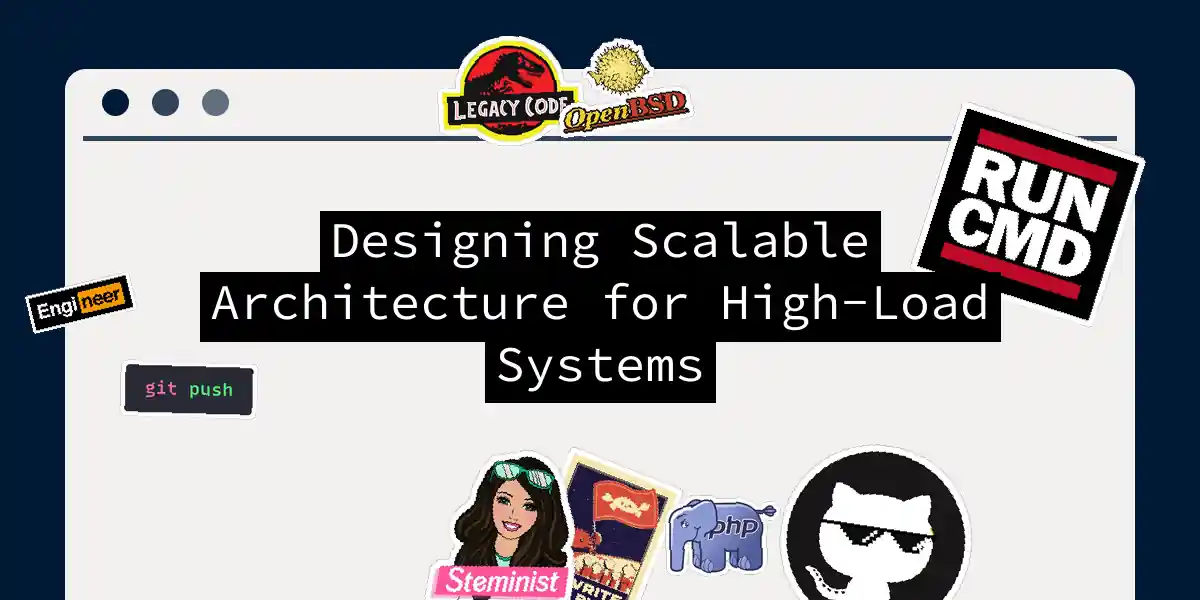The High-Load Conundrum: Why Scalability Matters
In the world of software development, few challenges are as daunting as building a system that can handle high loads. Imagine your application as a popular nightclub – it’s great when it’s bustling, but if the bouncers can’t handle the crowd, the whole place falls apart. This is where scalable architecture comes into play, ensuring your system can handle the party without breaking a sweat.
Understanding High Load
High load starts when a single server can no longer efficiently process data. This isn’t just about serving 10,000 connections simultaneously; it’s about handling thousands to millions of users without a hitch.
Here are some key facts about high load:
- Simultaneous Service: High load is about serving a large number of users at the same time.
- System Overload: When one server can’t handle the data processing, it’s time to scale.
- Cloud Deployment: Using cloud services like AWS, Azure, or Google Cloud Platform often means you’re already dealing with high-load architecture.
The Consequences of Poor Scalability
If your system can’t withstand high loads, you’re in for a world of trouble:
- Slow Page Loading: Users hate waiting, and slow pages can drive them away.
- Random Errors: These can be frustrating and make your application unreliable.
- Disconnected Connections: Users getting kicked off mid-session is a surefire way to lose them.
- Partial Content Loading: Missing images or incomplete pages are a no-go.
- User Loss: The ultimate consequence – losing your audience and clients.
Building a Scalable Architecture
Gradual Project Growth
You don’t need to build a skyscraper from day one. Start small and focus on scalability. Here’s how:
Load Analysis
Identify where the load is heaviest. This could be your database, web server, or application logic.
Determine Affected Areas
Find out which parts of your system are most affected by the load.
Transfer and Optimize
Move these areas to individual nodes and optimize them. For example, if your database is the bottleneck, consider separating it onto its own server.
Continuous Monitoring
Keep analyzing the load to ensure your system remains optimized.
Database Separation
The database is often the first node to feel the strain. Here’s why separating it makes sense:
By moving your database to a separate server, you reduce the load on your web server and application, improving overall performance.
Load Balancing
Load balancing is like having multiple bouncers at the nightclub – it ensures no single server gets overwhelmed.
Load balancers distribute incoming traffic across multiple servers, using methods like round-robin, least connections, or IP hash.
Autoscaling
Autoscaling is like having a magic bouncer who can summon more bouncers when the crowd gets too big.
Horizontal Autoscaling
Add more instances of the same resource to handle growing demand.
Vertical Autoscaling
Increase the capacity of a single instance, like upgrading the CPU or RAM.
Autoscaling relies on monitoring system performance and adjusting resources accordingly. Define thresholds and policies to manage how resources are distributed.
Distributed Database Architecture
A distributed database is like having multiple nightclubs in different locations – it spreads the load and ensures high availability.
Partition data, replicate it across servers, and use distributed file systems to ensure data integrity and availability.
Microservices Architecture
Microservices are like having a team of specialized bouncers – each handles a specific task, making the system more flexible and resilient.
Each service can be scaled independently, making it easier to manage high traffic and recover from errors.
Scaling Types
Vertical Scaling
Vertical scaling is like upgrading your car engine – it makes the existing machine more powerful but can be expensive.
Horizontal Scaling
Horizontal scaling is like adding more cars to your fleet – it distributes the load across multiple machines.
Most high-load systems use horizontal scaling due to its cost-effectiveness and scalability.
Conclusion
Building a scalable architecture is not just about handling more users; it’s about doing it efficiently and effectively. By focusing on flexibility, gradual growth, load balancing, autoscaling, distributed databases, and microservices, you can ensure your system remains robust, responsive, and reliable.
So, the next time you’re designing a high-load system, remember: it’s not just about the party; it’s about keeping the party going without any hitches. Happy coding
